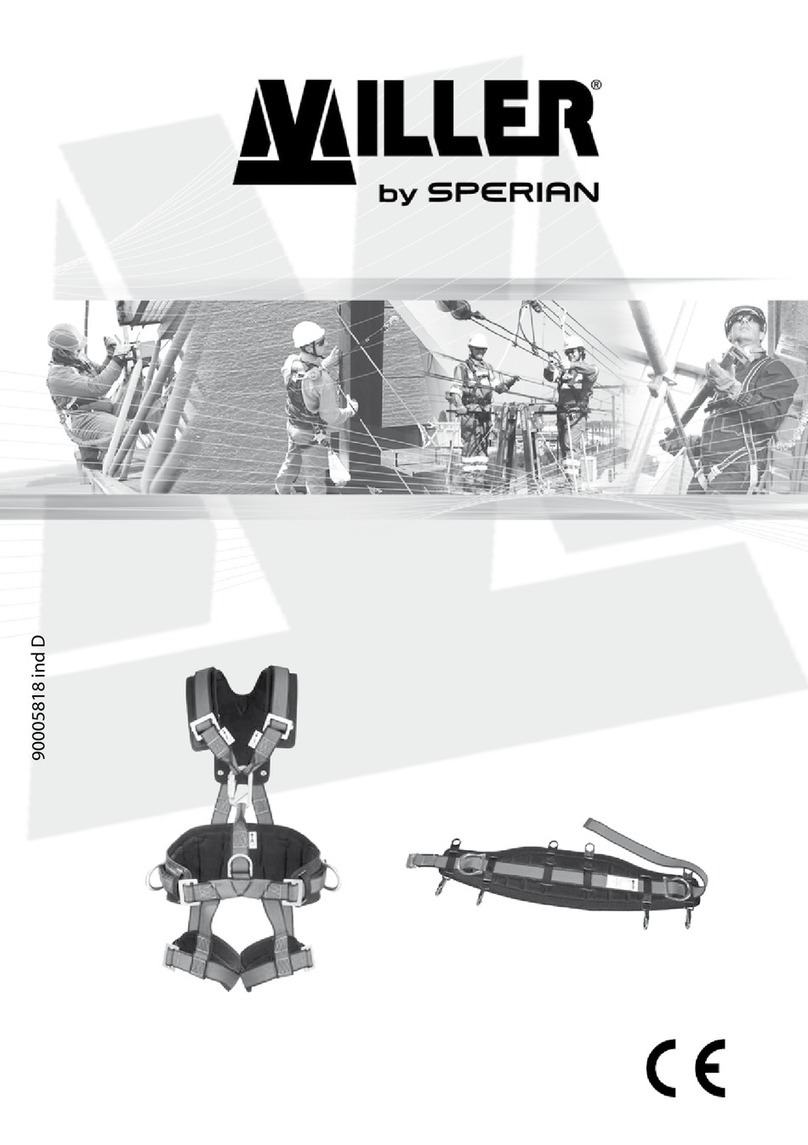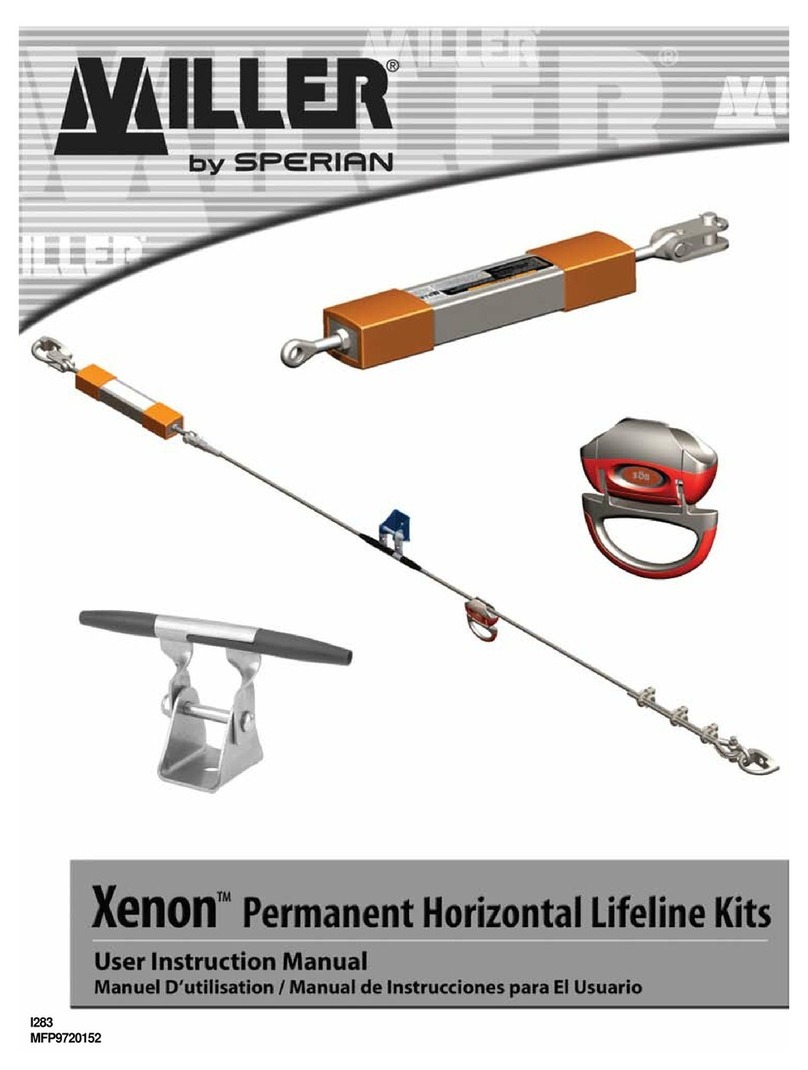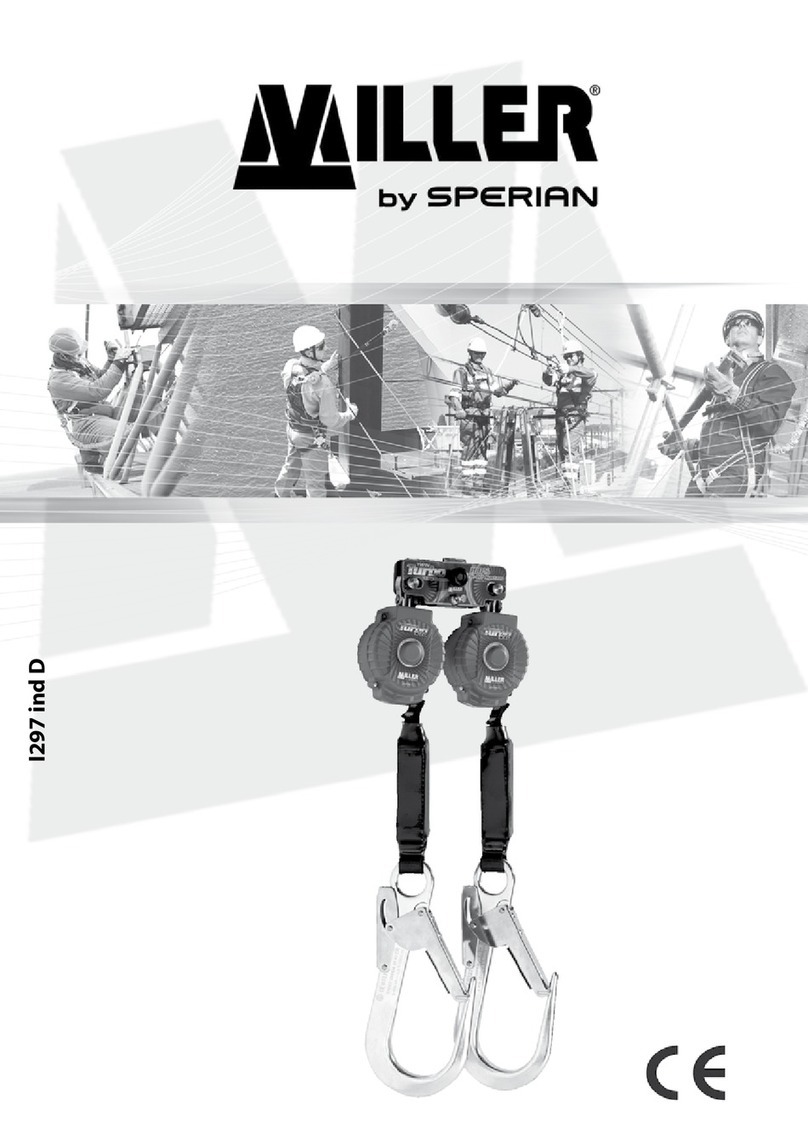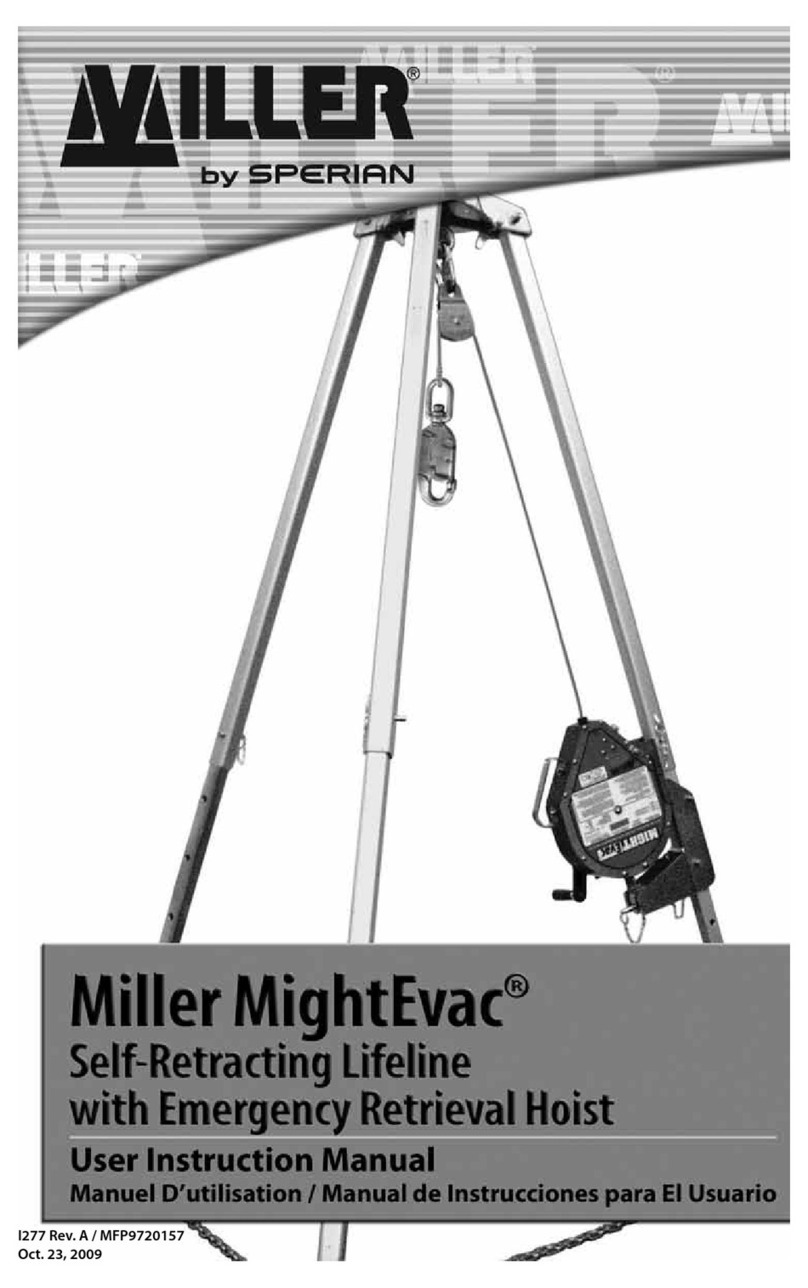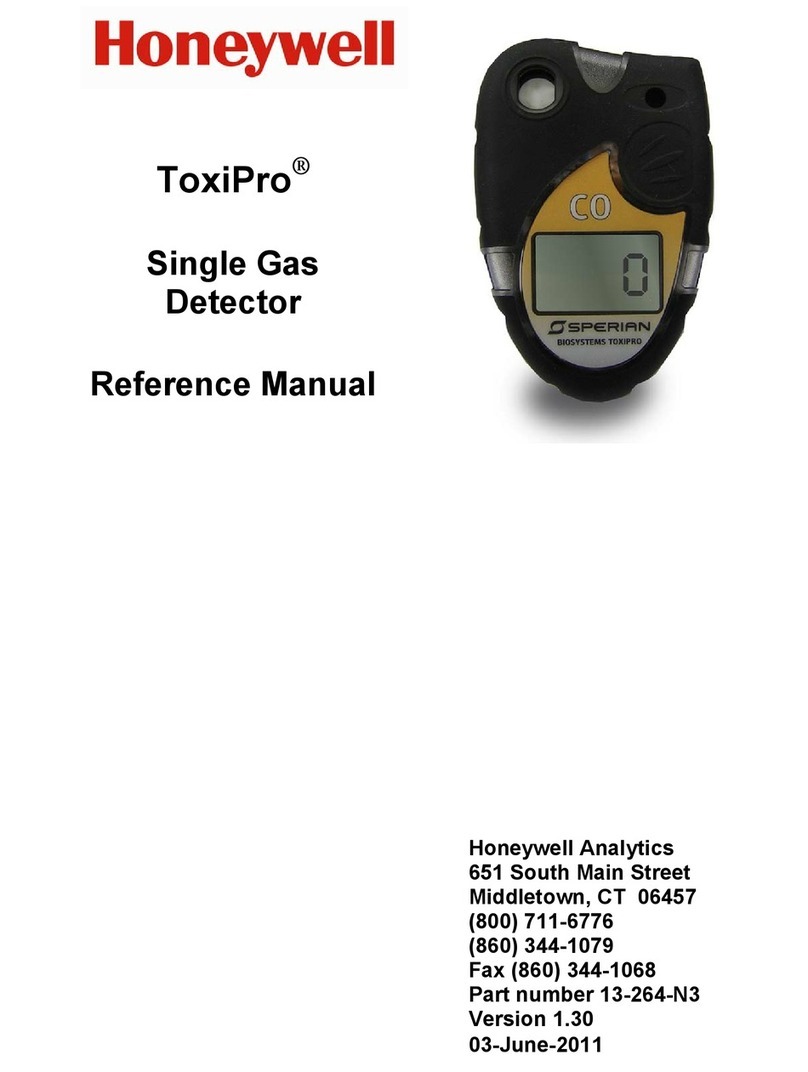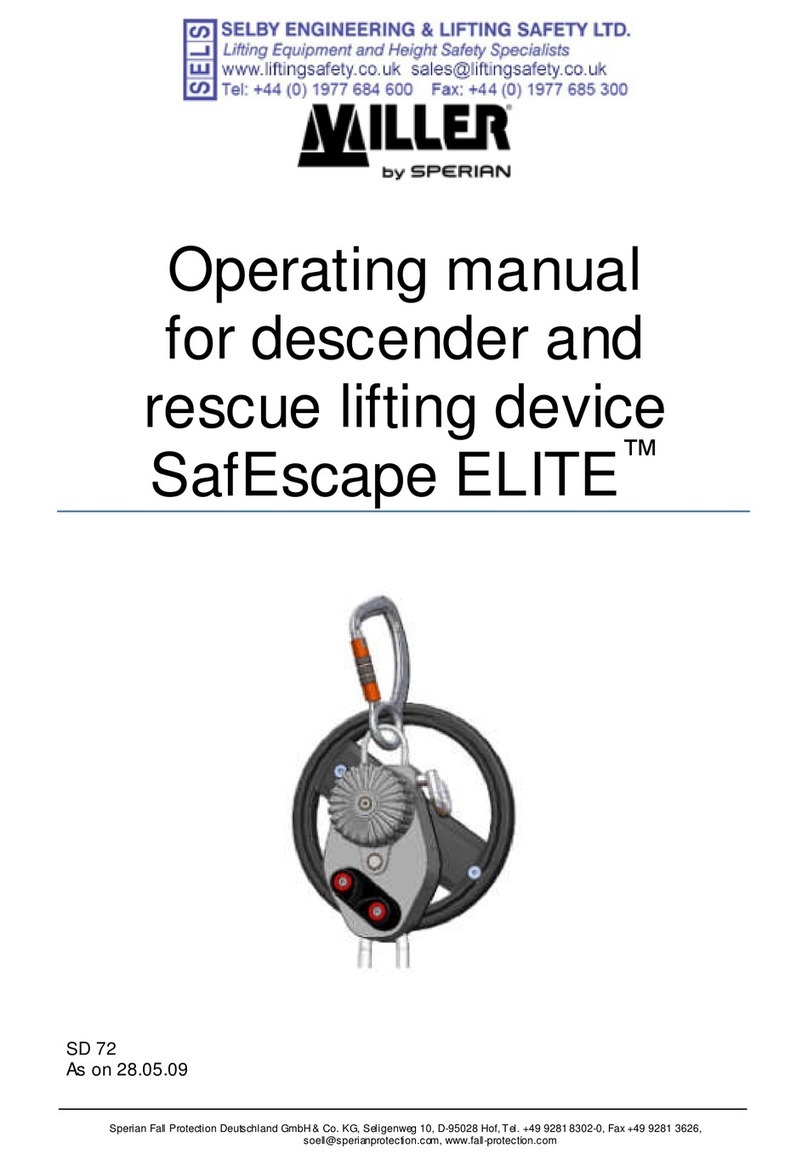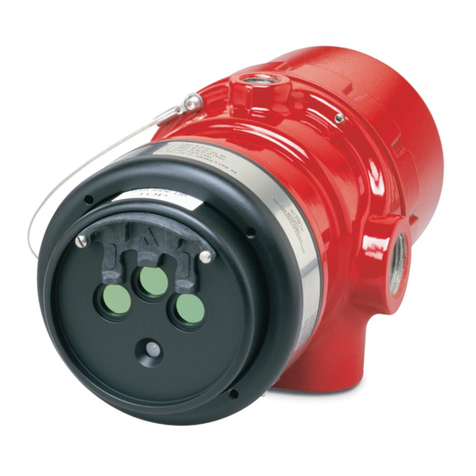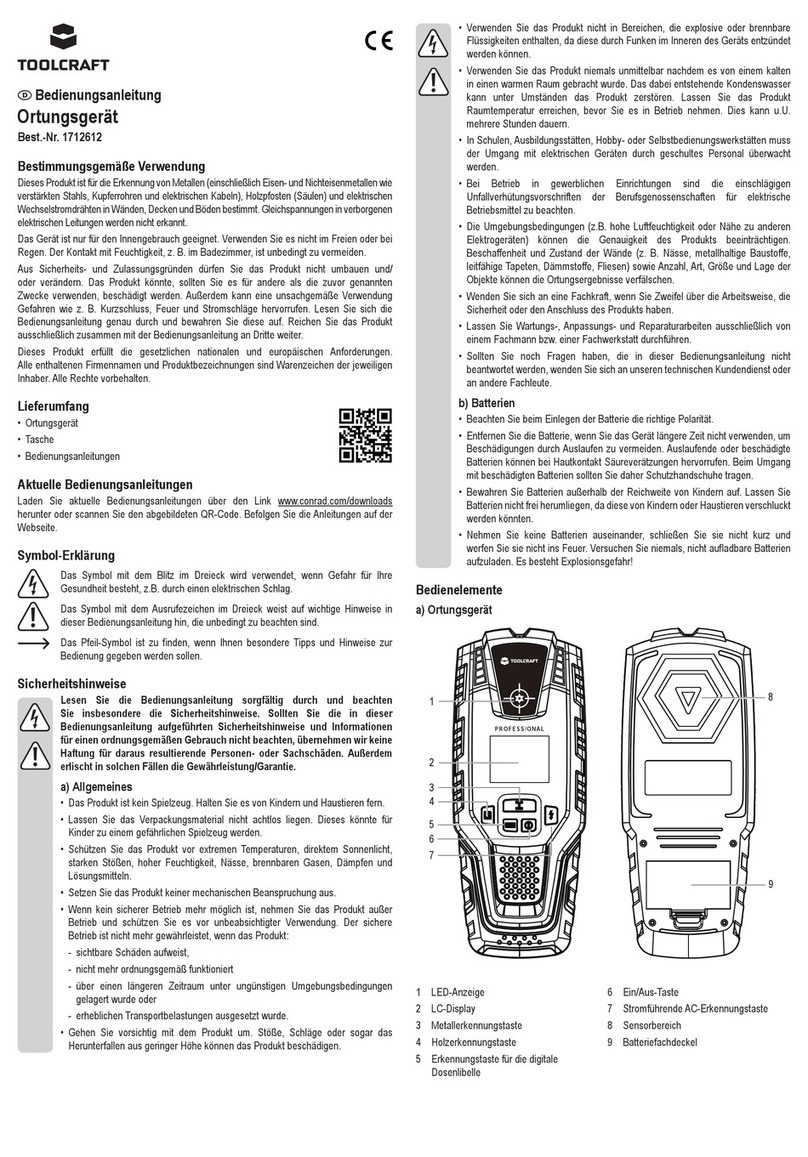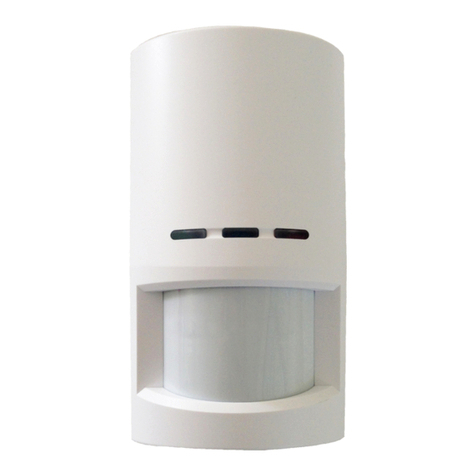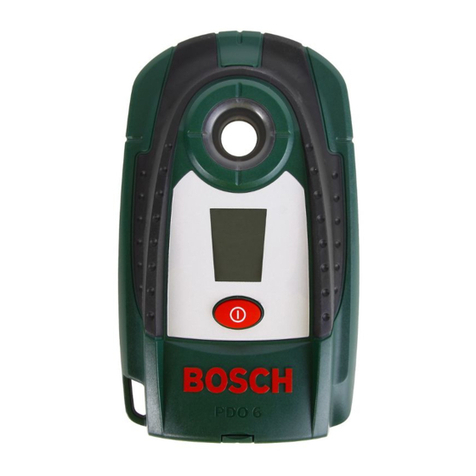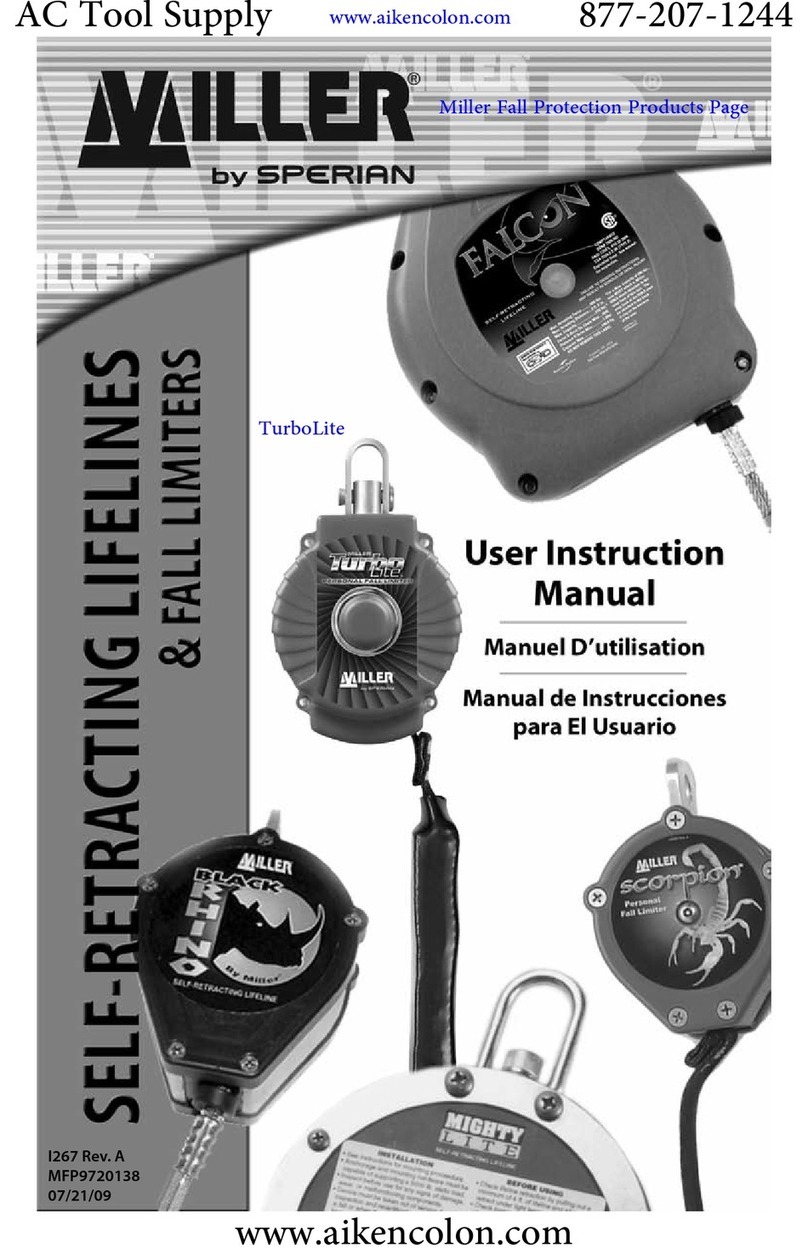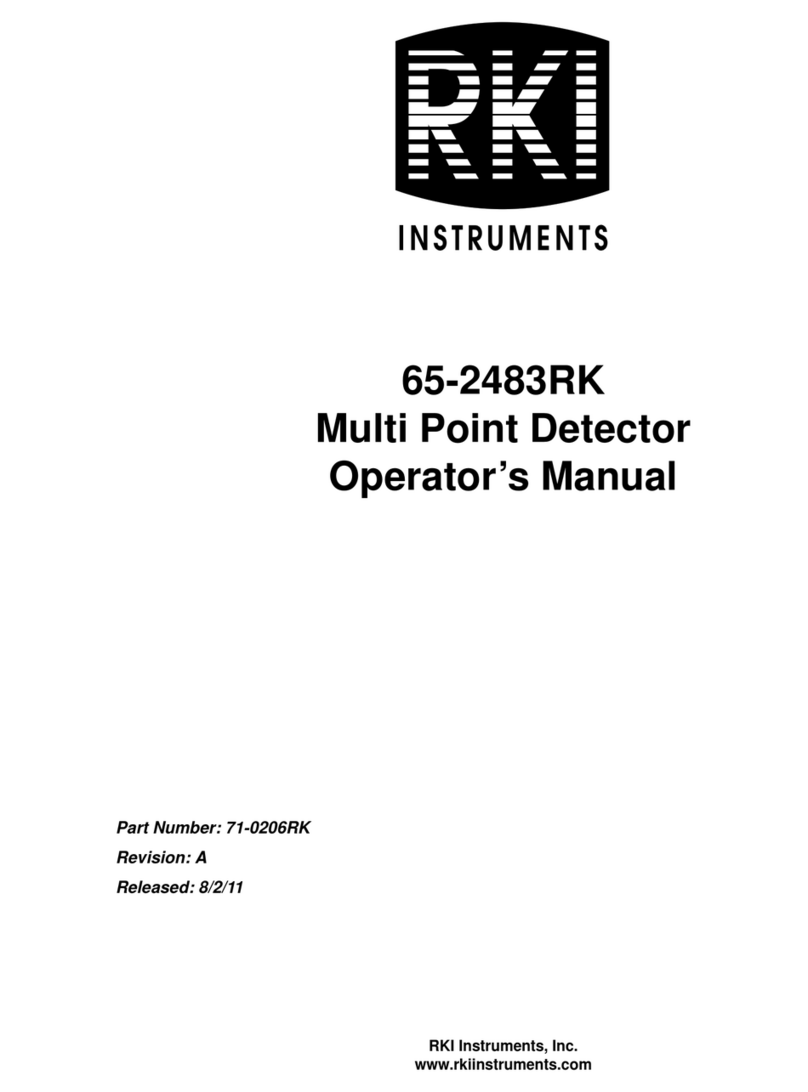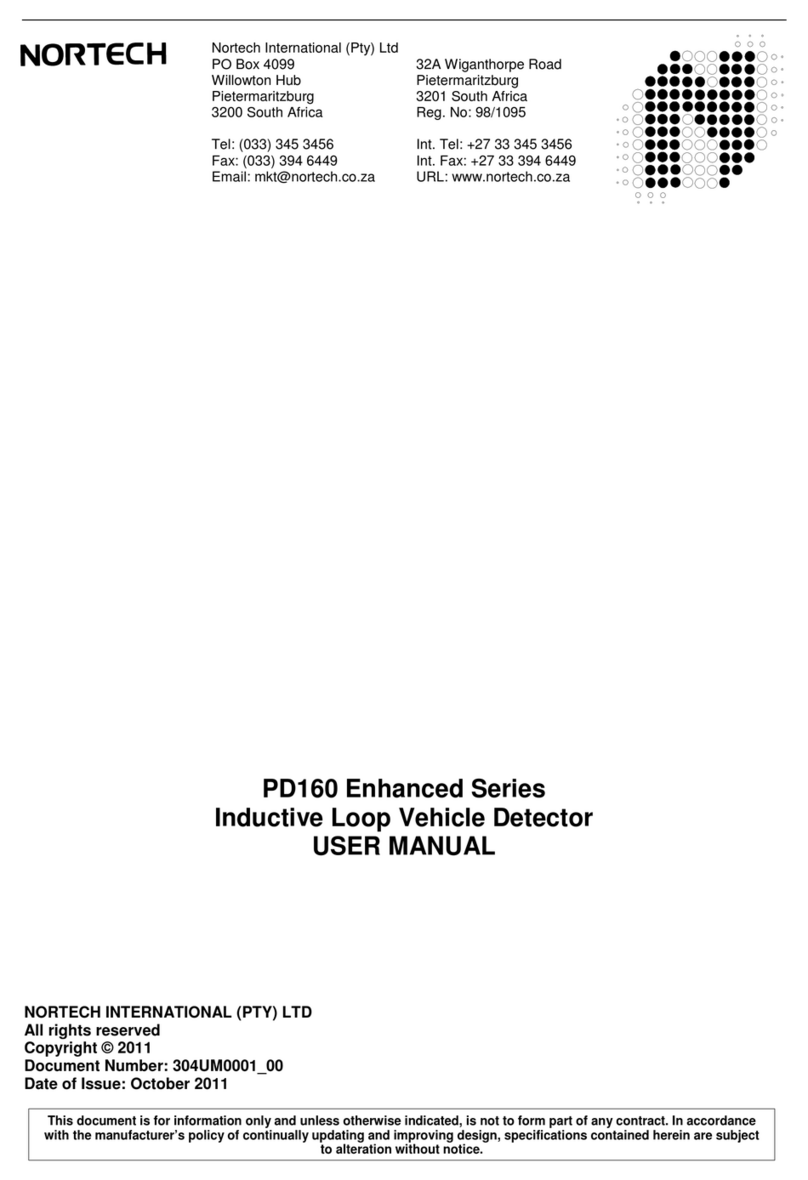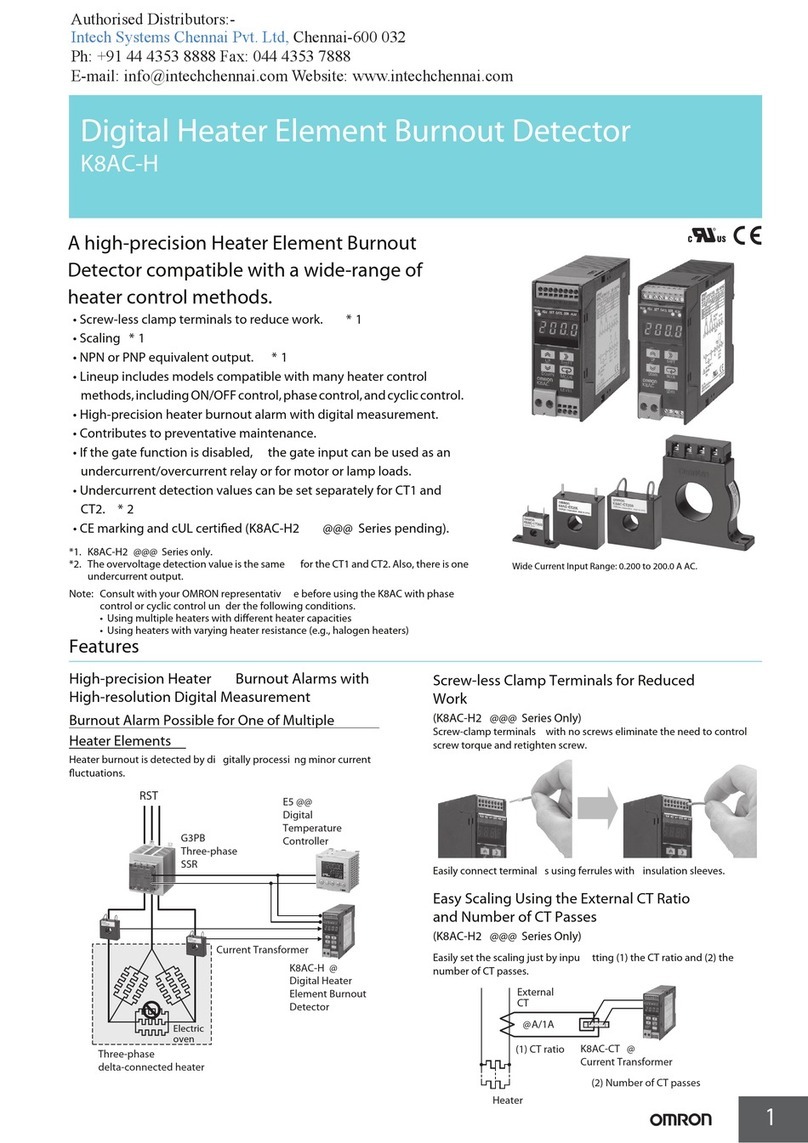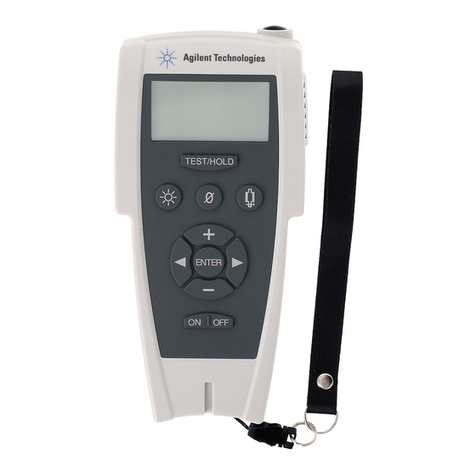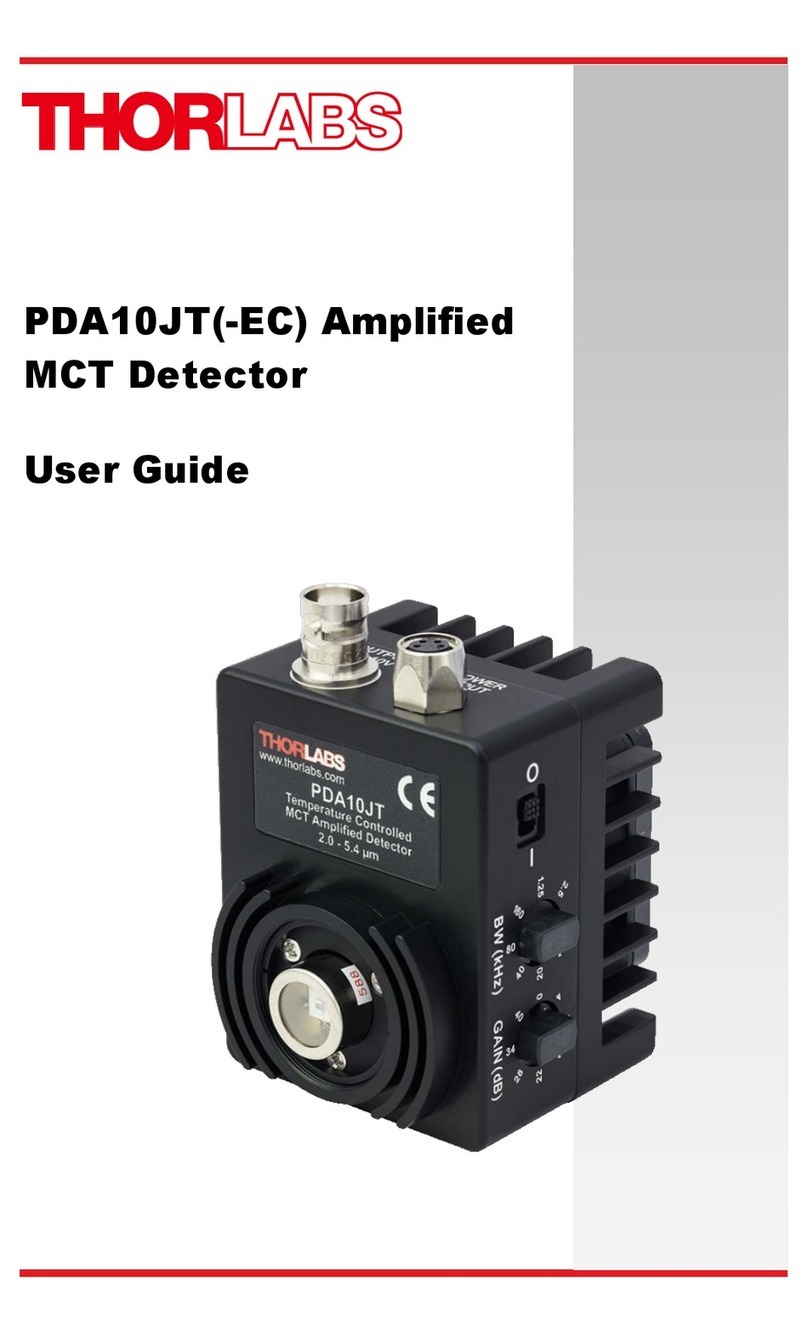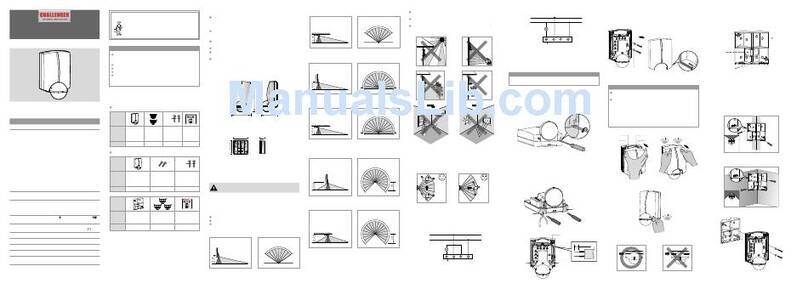
8
checking the readings. If the readings
differ from those expected in fresh air
(20.9% oxygen, 0 PPM toxic gas, 0% LEL
combustible gas), a "fresh air zero"
adjustment must be made. For most fixed
applications, where the freshness of the
ambient air is in question, a cylinder of
“Zero Air” must be used during the fresh
air/zero calibration.
The second step, which only applies to
toxic and LEL sensors, is to verify sensor
accuracy by exposing it to known
concentration test gas and noting the
response. Toxic and LEL readings are
considered accurate if the readings are
between 90% and 120% of the expected
value as given on the gas cylinder. If the
reading is accurate, then the instrument
requires no further adjustment. Toxic and
LEL readings that fall outside of this range
are considered inaccurate and indicate
that the sensor must be calibrated before
further use.
Calibration procedures are discussed
in detail in Chapter 4.
1.5 Displays and controls
NXP Gas Detector Heads include a 3-digit
LCD located on the face of the detector
housing. The heads also include a MODE
button that allows the user to initiate and
control the calibration of the detector.
Figure 1.5 – Main NXP Components
1.6 Power requirements
Power to the NXP can be provided either
from a controller or via a standard wall cube
available from Sperian.
The NXP requires a power supply of 13-30
VDC. Power is applied to connector J1 (see
Figure 2.5). Once powered up and running,
the NXP is intended for continuous
monitoring. If it is necessary to power down
the NXP, power should be removed from
the wall cube or controller that is supplying
power to the NXP.
1.7 Alarms and Alarm Logic
NXP Gas Detector
Heads have been designed for the
detection of dangerous atmospheric
conditions. An alarm condition
indicates the presence of a potentially
life-threatening hazard and should be
taken very seriously.
In the event of an alarm condition it is
important to follow established
procedures. The safest course of action
is to immediately leave the affected area,
and return only after further testing
together with other appropriate safety
procedures determine that the area is
once again safe for entry.
1.7.1 Atmospheric Hazard Alarms
NXP Fixed Gas Detectors with toxic or
combustible gas sensors include two levels
of alarms. One alarm serves as the
warning alarm; the second alarm serves as
the danger alarm. Detectors with oxygen
sensors have four alarm levels, as
described below.
Toxic and combustible gas sensors have
“ascending” alarms, meaning that the
alarms are activated when gas readings
rise above a pre-set alarm threshold.
Oxygen sensors have both “ascending” and
“descending” alarms, meaning that the
alarms activate when gas readings rise
above a pre-set alarm threshold or fall
below a pre-set alarm threshold. There is a
warning alarm and a danger alarm in each
direction.
Table 1.7 lists the available alarm levels
and span gas values for each sensor type.
Custom alarm levels and calibration gas
values may be set using BioTrak II
